In the past 4 years of blogging I’ve made some wonderful friends and a couple weeks ago I got an idea. Why not showcase some of the people I’ve met through The Daily Dish? “Low Sodium Spotlight” is my way of celebrating individuals within the salt-free community. I hope you find their stories inspiring.
So without further ado, meet Sue Tweeton!
 I discovered Sue’s blog, PLEASE, Don’t Pass the Salt! months ago and have since returned time & time again to marvel at the resource base she’s created. Sue covers so many low sodium basics, from salt-free product finds to complete how-to posts describing bread making and much more. She’s always creating new recipes, offering tips and ideas, and generally being the amazing and encouraging person she is. PLEASE, Don’t Pass the Salt! is a low sodium site to bookmark and read, start to finish.
I discovered Sue’s blog, PLEASE, Don’t Pass the Salt! months ago and have since returned time & time again to marvel at the resource base she’s created. Sue covers so many low sodium basics, from salt-free product finds to complete how-to posts describing bread making and much more. She’s always creating new recipes, offering tips and ideas, and generally being the amazing and encouraging person she is. PLEASE, Don’t Pass the Salt! is a low sodium site to bookmark and read, start to finish.
Sue, when/why did you start following a low sodium diet? What has been the impact on your health (and life in general)?
About six years ago my husband was diagnosed with congestive heart failure. He was seriously ill and spent over a week in ICU. He was horribly weak, suffered from atrial fibrillation (arrhythmia), had an enlarged heart, and had massive fluid buildup in his lungs. The doctors said his heart was working at only 15% capacity. While in the hospital he was prescribed a regimen of several drugs to stabilize his condition. The doctors also told him to restrict his daily sodium intake and to limit his fluid consumption. That’s when we first learned about the connection between heart failure and sodium intake.
When did you start blogging about low sodium cooking, products or lifestyle? How has that affected you?
I grew up in a Greek household and learned to cook the way my mother and grandmother did – a pinch of this, a spoonful of that – no exact recipes. My dad insisted on mainly Greek food, so that’s what I grew up eating and first learning how to cook. My mother was a great cook and had a large collection of cookbooks. I used to read them while watching TV at night with my folks. My mom and I watched the Galloping Gourmet and Julia Child TV shows together, and even after marrying, I’d watch cooking shows on PBS every Saturday morning. All that to say this: I was a pretty good cook, well versed in the use of various herbs and spices and familiar with a lot of different cooking techniques. However, I rarely followed recipes. I used them mainly as guides and inspirations.
After my husband’s diagnosis, I determined to not only cook low sodium meals for him but to also join him – whatever he ate, I would eat. I started this adventure by researching the low sodium lifestyle and found several resources online. I especially appreciated Dick Logue’s Low Sodium Cooking site and Donald Gazzaniga’s MegaHeart. I also discovered two really good sources for low sodium products – Healthy Heart Market and SaltWatcher. I even attended some classes at our HMO dealing with congestive heart failure. I gleaned a lot of good basic information, but was a bit frustrated.
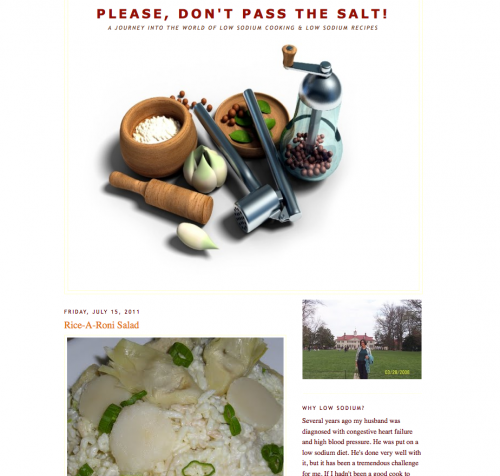 Most of the advice simply emphasized the dangers of too much salt in your diet, why you didn’t need so much salt, and what products to avoid. The few helpful hints offered were pretty pathetic – Mrs. Dash & lemon juice! What do you do once you get sick of the Mrs. Dash products and get tired of having everything lemon flavored? Also the focus seemed to be on following recipes rather than explaining how to make food taste good. My dilemma was that most of the recipes I read or tried were rather blah. Adding a clove of garlic here or a sprinkle of lemon juice there was not enough to make dull food sparkle. I knew that I couldn’t expect my husband to stick with a low sodium diet if his food tasted boring. I also knew that I wouldn’t want to cook or eat ho-hum food. I wanted some basic techniques for making low sodium food interesting.
Most of the advice simply emphasized the dangers of too much salt in your diet, why you didn’t need so much salt, and what products to avoid. The few helpful hints offered were pretty pathetic – Mrs. Dash & lemon juice! What do you do once you get sick of the Mrs. Dash products and get tired of having everything lemon flavored? Also the focus seemed to be on following recipes rather than explaining how to make food taste good. My dilemma was that most of the recipes I read or tried were rather blah. Adding a clove of garlic here or a sprinkle of lemon juice there was not enough to make dull food sparkle. I knew that I couldn’t expect my husband to stick with a low sodium diet if his food tasted boring. I also knew that I wouldn’t want to cook or eat ho-hum food. I wanted some basic techniques for making low sodium food interesting.
As I began low sodium cooking, I realized that I had it rather easy. I was a good cook to start with, and I was retired. I could spend several hours each day making everything from scratch. But I remembered back to my hectic days as a teacher, wife, and mother of two children. Coming home late in the afternoon, tired and with a load of papers to correct. I needed to fix something for dinner but had little energy or inspiration. So I relied on some convenience foods – cream of whatever soups, rotisserie chicken, fully cooked sausages, etc.
I began to wonder about other people who had been told to follow a low sodium diet. I was sure some of them didn’t have the time to dedicate to making everything from scratch. Probably some weren’t skilled cooks. Or maybe they didn’t enjoy cooking at all. Perhaps some couldn’t afford to order tons of stuff from online sources. What were they supposed to do? It’s pretty easy for a doctor to say you should eat a very low sodium diet, but I bet that very few of them have ever had to try to live it – day after day, week after week for years and years. I’d love for doctors to try living on a sodium restricted diet with their current (and probably limited) knowledge of cooking and see how well they handle it.
I decided to start blogging about my experiences trying to create good tasting low sodium dishes. I wanted to focus on helpful techniques rather than just recipes. I also wanted to discuss how to make readily available grocery store products work in a low sodium diet. But more than anything, I wanted to be honest and realistic about the challenges and pitfalls.
What is your favorite low sodium recipe? Cookbook or magazine (low so or not)? What low sodium or cooking blogs do you read weekly or daily, or find particularly helpful or inspiring?
To this day my cooking style hasn’t really changed much. I’m still not one to follow recipes. However, I’ve become more experimental. I keep trying to improve the taste of old favorites. I try to assess each dish I make to see where I could do better. I’ve learned which dishes adapt well to a low sodium version and which do not. And, yes, there are some dishes that do not transition well to low or no salt. I’ve pretty much mastered low sodium yeast breads, and I’ve become quite the sleuth at the grocery store, searching out lower sodium products. My husband and I have become fairly adept at ordering lower sodium dishes in restaurants too. So from time to time we are able to join friends and family when dining out.
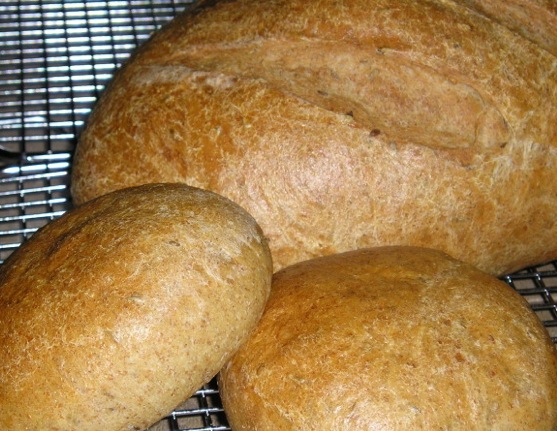
I enjoy being a member of Garden Web’s Cooking Forum. The members there share all kinds of recipes, tips, and useful information. I actually prefer to adapt regular recipes than to follow strictly low sodium recipes. That’s especially true of yeast bread recipes. I receive the free e-newsletters from Dick Logue and Donald Gazzaniga, and I enjoy reading “The Daily Dish.†Christy always has some really interesting recipes that are low sodium friendly. (Thank you, Sue, for that shameless plug…)
What do you miss most on a low sodium diet?
I don’t care what anyone says, food prepared without salt tastes a bit flat. It doesn’t taste bad, but you sense that something is missing. I think it’s important to recognize that fact and accept it. I’ve had people tell me and I’ve read that if you cook without salt, your taste buds will change after a few months and you won’t miss the salt. I have not found that true. I notice that the salt is missing. But, again, that doesn’t mean the food tastes bad, just different. However, the dishes I prepare must taste pretty good because we’ve kept on this low sodium diet for six years now. My husband is doing pretty well, all things considered, and he’s very appreciative of all my efforts.
It’s a challenge but not an impossible one. Since we started this adventure, many new products have appeared in grocery stores and there is a heightened awareness of the high sodium levels in processed foods. Every little bit helps make the journey easier.
Were you interested in cooking before this life-altering change?
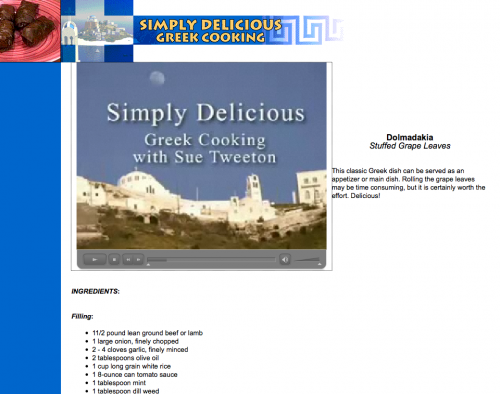 Years ago my husband & I worked together on a Greek cooking show that aired on the local public access TV stations in the Sacramento area. The biggest challenge was quantifying the ingredients in order to create “official†recipes. I discussed the family recipes with my mother many times on the telephone. We both knew what was supposed to go into the dishes and how they were supposed to be prepared. But neither one of us could give exact quantities. Our cooking style was – a can or two of tomato sauce, a little bit of oregano, maybe some mint – nothing very definite. I researched Greek recipes online and in cookbooks, talked with my mom a lot, and “test drove†the recipes before taping the shows. The end result was video documentation of our family recipes and an accompanying cookbook we printed for our family members. Now our cooking heritage is preserved. To view the recipes and cooking shows, go to Tweeton.com. The stuffed grape leaves show features a special guest appearance from my mother.
Years ago my husband & I worked together on a Greek cooking show that aired on the local public access TV stations in the Sacramento area. The biggest challenge was quantifying the ingredients in order to create “official†recipes. I discussed the family recipes with my mother many times on the telephone. We both knew what was supposed to go into the dishes and how they were supposed to be prepared. But neither one of us could give exact quantities. Our cooking style was – a can or two of tomato sauce, a little bit of oregano, maybe some mint – nothing very definite. I researched Greek recipes online and in cookbooks, talked with my mom a lot, and “test drove†the recipes before taping the shows. The end result was video documentation of our family recipes and an accompanying cookbook we printed for our family members. Now our cooking heritage is preserved. To view the recipes and cooking shows, go to Tweeton.com. The stuffed grape leaves show features a special guest appearance from my mother.
Last, I must ask. In many of the comments you sign your name as “Shambo.” What’s that all about? How did you get that nickname??
Christy, the name SHAMBO is one of those weird tales that demonstrates just how nuts our family really is. Years ago my daughter had a boyfriend whose mother had a cat named Sham. I have absolutely no idea why the cat got that name. Anyhow, the boyfriend’s mother decided she wanted to get a Corgi. And in her mind, if she got the dog, she’d have to get rid of the cat. So one day my daughter & her boyfriend showed up with Sham, the cat. Well, as we always do with everything and everyone, we started calling the cat various nicknames. I believe Shambo was the first nickname. You know – Sham… Rambo… Shambo! It made perfect sense, right? We also called her Shambala after Shambala Green, one of the defense lawyers the prosecutors dueled with during the early years of the original “Law & Order.†And then, of course, there was Shama-lama-ding dong! I’m sure there were others, but I’ve forgotten them.
For some reason when I started posting to the Cooking Forum, I picked Shambo as my user name. And it’s stuck with me ever since. By the way, Sham was the nastiest cat we ever had. And eventually the boyfriend’s mother got sick of the dog, so we ended up with the corgi. That’s the story. Aren’t you sorry you asked?
MANY THANKS to Sue for sharing with us!
Be sure to check out Sue’s low sodium blog: PLEASE, Don’t Pass the Salt!



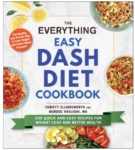

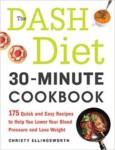
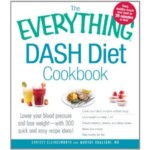
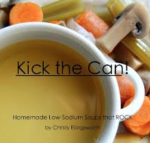
8 Responses to Low Sodium Spotlight: Susan Tweeton